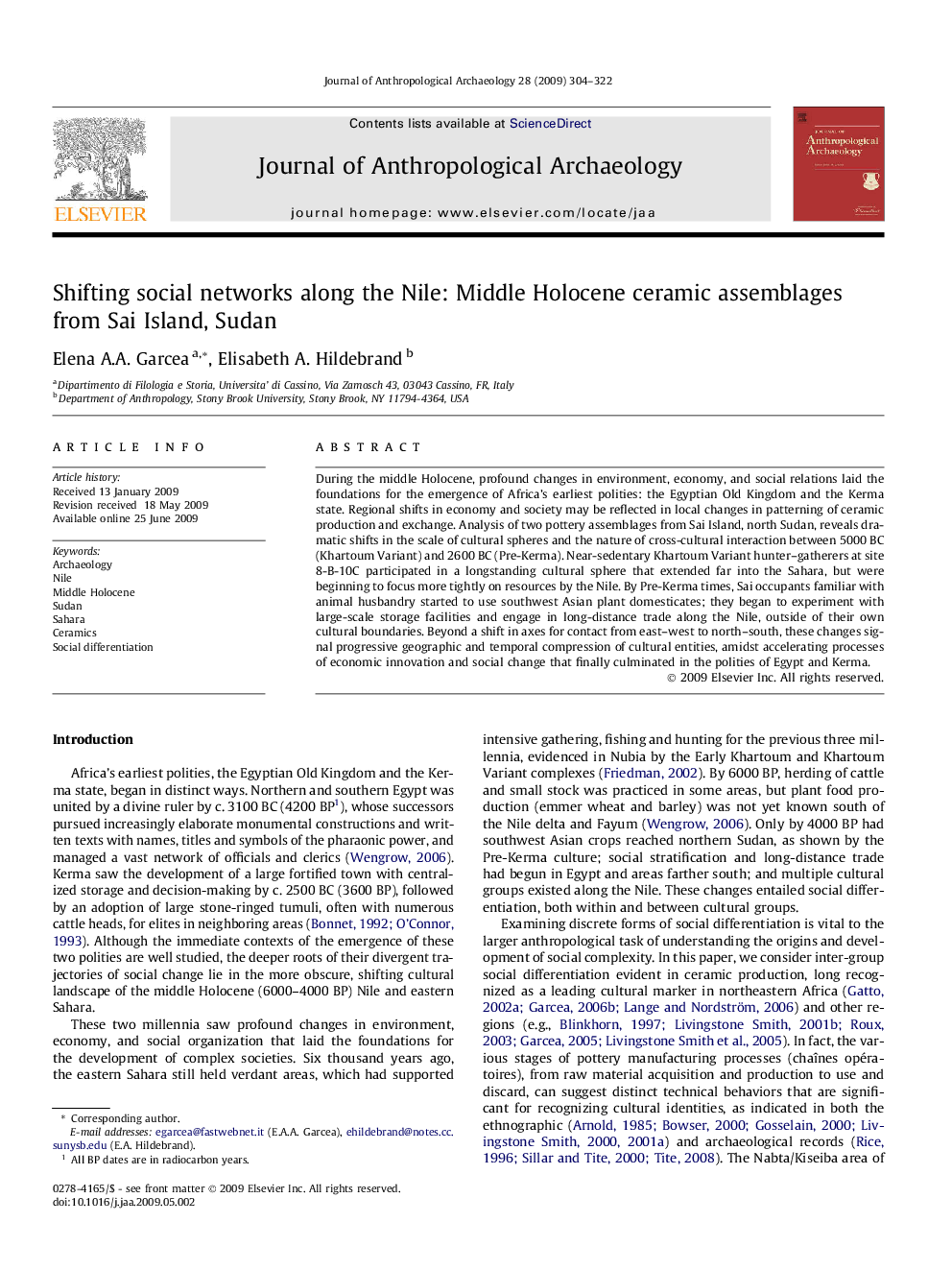| کد مقاله | کد نشریه | سال انتشار | مقاله انگلیسی | نسخه تمام متن |
|---|---|---|---|---|
| 1035149 | 943702 | 2009 | 19 صفحه PDF | دانلود رایگان |

During the middle Holocene, profound changes in environment, economy, and social relations laid the foundations for the emergence of Africa’s earliest polities: the Egyptian Old Kingdom and the Kerma state. Regional shifts in economy and society may be reflected in local changes in patterning of ceramic production and exchange. Analysis of two pottery assemblages from Sai Island, north Sudan, reveals dramatic shifts in the scale of cultural spheres and the nature of cross-cultural interaction between 5000 BC (Khartoum Variant) and 2600 BC (Pre-Kerma). Near-sedentary Khartoum Variant hunter–gatherers at site 8-B-10C participated in a longstanding cultural sphere that extended far into the Sahara, but were beginning to focus more tightly on resources by the Nile. By Pre-Kerma times, Sai occupants familiar with animal husbandry started to use southwest Asian plant domesticates; they began to experiment with large-scale storage facilities and engage in long-distance trade along the Nile, outside of their own cultural boundaries. Beyond a shift in axes for contact from east–west to north–south, these changes signal progressive geographic and temporal compression of cultural entities, amidst accelerating processes of economic innovation and social change that finally culminated in the polities of Egypt and Kerma.
Journal: Journal of Anthropological Archaeology - Volume 28, Issue 3, September 2009, Pages 304–322